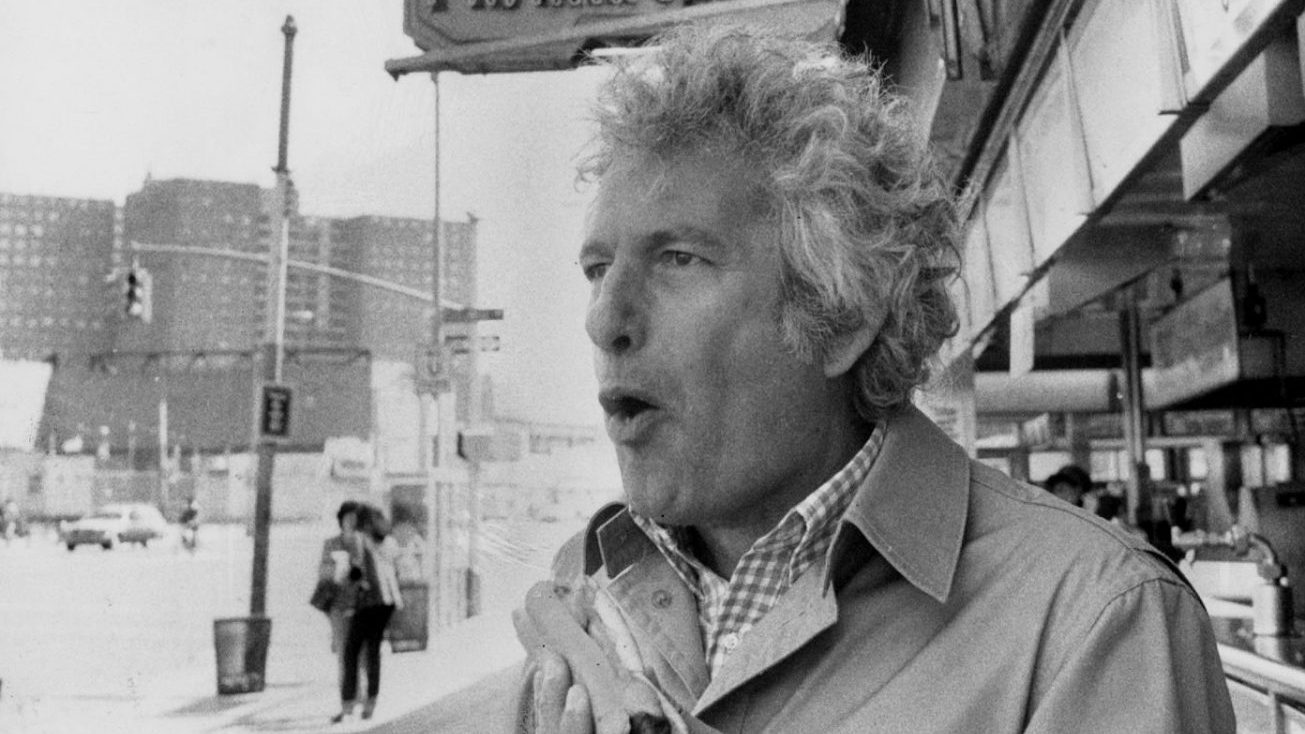Did anything endure a more dramatic rollercoaster ride during lockdown than sourdough bread? In the early days of the pandemic social media was awash with people’s home baking efforts to the extent that sourdough was, by the start of the summer of 2020, officially the new rock’n’roll.
Then almost overnight it all went wrong for sourdough. We became sick of the sight of it. A sourdough backlash lashed back and people became ashamed to admit they were making the stuff. Tall poppy syndrome, if you like, not least because there were probably creative bakers out there who produced loaves infused with actual tall poppies. Either way, sourdough became almost illicit; the moonshine of artisan baking.
Meanwhile, others got on with less Instagrammable projects facilitated by the necessity to stay at home. They learned new languages and picked up musical instruments, briefly turning the national soundtrack into a combination of Duolingo fanfares and badly-tuned ukuleles.
Underneath all that was the just discernible clatter of laptop keys as many of the newly homebound finally started that novel they’d been meaning to write since their angst ridden teens. Late into the night they typed, faces bathed in the blue-white glow of the screen as plotlines intertwined and narratives arced. They refined and edited, polished and honed, submitted to the muse and murdered their darlings – and then it was ready. The book into which they’d poured the very core of their being then run through a spellchecker, finally, it was done.
Those novels are now piling up in the inboxes of publishers and literary agencies across the nation. The publishing industry is inundated with new writers and their manuscripts at the best of times; right now it’s being swamped like never before with lockdown literature making it tougher than ever for new writers to be noticed, let alone published. If yours is one of those achingly polite, carefullyworded e-mails with a dream-soaked Word document attached currently awaiting attention, I am here to bring you sympathy and encouragement. I know what it’s like.
The first thing to bear in mind is that you might wait a long time for a response. Publishers and agents are busy enough with their existing books and authors, leaving them with limited time to discover you as the next big thing. And it’s important to remember: they want you to be the next big thing. When they read your e-mail and download the attachment, they are hoping you are exactly what they’ve been looking for all these years.
The next thing to bear in mind is that while you may not be exactly what they’ve been looking for all these years, you might be exactly what someone else has been looking for all these years. That’s why you shouldn’t give up. Every editor and agent has their own opinion on what makes a commercially successful novel; if they didn’t we’d just have one publisher knocking out three or four books a year. The next editor to read yours might see exactly what you see in it and you’ll both be lighting Cuban cigars with £50 notes within a year, but in the meantime you have to become used to a certain amount of rejection.
Rejection is part of any writer’s life, no matter how successful they become. It’s tough, but important to remember to trust yourself and not become disheartened. Of course it’s going to hurt; receiving a boilerplate reply to something you’ve worked hard on baldly stating that your book is not quite what they’re looking for, well, that’ll never not feel like cold steel sliding between your ribs. But fear not: each rejection is not necessarily the definitive verdict on your prospects. Even the best, the most famous writers have been through the same thing.
“I love my rejection slips, they show me I try,” wrote Sylvia Plath, while Anita Shreve claimed she could wallpaper her bathroom with the rejections she’d received, regarding them “not as messages to stop but as tickets to the game”.
Famously JK Rowling’s first Harry Potter book was knocked back by a dozen publishers before Bloomsbury took a punt for an advance of just £1,500. The title of Joseph Heller’s Catch-22 includes the number of rejections he received before the book was accepted. When Louisa May Alcott first submitted the manuscript of Little Women she was told, “Stick to your teaching, Miss Alcott – you can’t write”.
It took James Joyce 18 rejections before his debut Dubliners found a publisher, and even then his contract terms stated there would be no royalties until he’d sold 500 copies. The first edition sold – guess what – 499 copies, 120 of which were bought by Joyce himself.
In 1912 French publisher Marc Humblot returned the manuscript of Swann’s Way to Marcel Proust with the comment, “I may perhaps be dead from the neck up, but wrack my brains as I may I can’t see why a chap should need 30 pages to describe how he turns over in bed”.
“I find Monsieur Humblot’s letter, which I return herewith, completely idiotic,” responded the author, possibly not a strategy to be emulated.
Stephen King’s debut Carrie almost didn’t make it to a publisher at all: as King details in his excellent writers’ guide-cum-memoir On Writing he’d binned the manuscript himself, only for his wife to retrieve it and encourage him to carry on. When he did eventually submit the book King racked up 30 rejection letters for Carrie before Doubleday took on a book that went on to sell more than a million copies.
Such roundabout routes to publication for even the greatest writers demonstrate how far from perfect the publishing industry is, which is why you have every reason to keep believing in yourself and your manuscript even in the face of persistent rejection. It often comes down to the publisher’s personal taste or even just a big slice of dumb luck, when fortune plucks the situation completely out of your hands.
Take Theodore Geisel, for example, known to the world as Dr Seuss. In 1937 the first Dr Seuss book And to Think That I Saw It on Mulberry Street had been turned down 27 times when Geisel decided to call it a day. After doorstepping his final publisher with predictable results, he was walking up Madison Avenue in New York when he bumped into an old friend named Mike McClintock who after a cheery exchange of greetings asked after the package Geisel was carrying.
“Just a book no-one will publish,” he shrugged. “I’m taking it home to burn it.”
That day happened to be McClintock’s first as head of children’s books at Vanguard Publishing. He ushered Geisel into his office, read the manuscript and bought it on the spot.
“If I’d been going down the other side of Madison Avenue that day,” recalled Geisel, “I’d now be in the dry-cleaning business.”
Not many people get that lucky, but you can determine your good fortune to a certain extent by being as persistent as Dick Wimmer. The American writer endured no less than 162 rejections, widely regarded as the record for a single manuscript, before his novel Irish Wine was finally accepted for publication in 1989, 25 years after his first pitch.
“I don’t want it to be a freak of fiction,” he said when his novel finally appeared, “I would like the book to hold up on its own merits.” The fact that Irish Wine became the first of a successful trilogy suggests that it did.
Perhaps my favourite stubbornly persistent author is the Australian poet FC Meyer. In 1928, having been turned down by the Sydney publisher Angus & Robertson, the Katoomba-based bard proposed submitting more poems that might be more suited to them. If the answer was still no then maybe they would recommend other imprints he might approach.
“No, you may not send us your verses,” came the reply, “and we will not give you the name of another publisher. We hate no rival publisher sufficiently to ask you to inflict them on him. The specimen poem is simply awful. In fact, we have never seen worse.”
This, erm, unequivocal rejection would have been the last straw for many writers, but there was iron in FC Meyer’s poet’s heart. It took another eight years but Meyer did eventually see his poems published, a collection called Pearls of the Blue Mountains of Australia appearing in 1936.
“Often a little artless in regard to form and heedless of humour,” said the Sydney Morning Herald, “but showing an appreciation of nature.”
Take that, Angus & Robertson. I bet their sourdough was rubbish, too.
A European Library
A weekly selection of fiction and non-fiction, new and old, to build a comprehensive literary portrait of our continent.
MISS SMILLA’S FEELING FOR SNOW Peter Høeg (Harvill £9.99) Scandinavian noir is everywhere these days. You can barely change the channel on the TV without coming across an enigmatic, conflicted Nordic detective frowning in a dimly lit room. It’s arguable that Danish writer Høeg’s 1992 novel, published in English for the first time in 1993, started it all. More than just a conventional crime thriller, this is a book of themes and layers, covering Denmark’s difficult relationship with its colonial past and the challenges the country faced after the wild economic times of the 1980s. The eponymous Smilla, with her investigative tenacity and mixed Danish/Inuit heritage, proves to be an unforgettable protagonist, the perfect conduit for the book’s wider issues.




